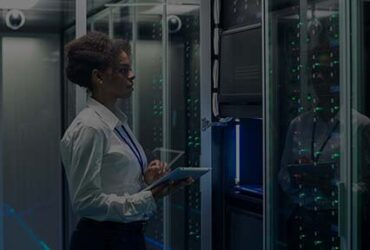With the advent of the pandemic early this year, organizations worldwide were forced to adopt remote working practices. While a small percentage of businesses had a clear operational model in place, many found it challenging to make this sudden shift to telecommuting. One of the ways many companies tackled this problem was by switching to a Virtual Desktop Architecture (VDI) model.
A VDI is a desktop environment on a remote server that stores the operating systems, software, and data in a centralized location. This model allows employees in different geographical areas to collaborate and work together effectively. VDIs are deployed in two different ways depending on the need – persistent and non-persistent sessions. A persistent VDI is similar to a standard physical desktop. Each virtual desktop has all the personal settings of an individual user. Each user can customize it and use it according to their needs. A non-persistent VDI or stateless VDIs, as they are often referred to, do not store any user information or customizations. It exists as long as the user is logged in. Once the session is over, all of the information on it is lost.

So how can you determine if your organization needs a virtual desktop infrastructure? Let us look at some of its benefits to find out:
Collaborative work environment: Since all business data is stored in a centralized location, employees can collaborate in real-time to increase agility and work more effectively.
Accessibility: A VDI only utilizes basic input and output data, and this ensures that it can be accessed from almost any device.
Security: Since the VDI only sends and receives basic information, it is considered highly secure. There is little chance of a data breach of business-critical data. In addition to this, it has normal security features of a traditional environment like restricted access for specific users.
Cost optimization: Adopting a VDI model in your enterprise can help reduce infrastructure expenses like hardware and maintenance costs, software licensing costs, energy costs, and staffing expenditure.
Backup: Since all of the information is stored in a secure cloud environment, the chances of data loss are very slim. If any business-critical data is deleted accidentally, it can be easily retrieved and restored from backup files.
Easier troubleshooting: Since all data, operating systems, and software are located in a central server, it is easy to troubleshoot and fix any problems that may arise. It allows users to migrate to newer platforms seamlessly
While VDIs come with a host of benefits, it may not be the right choice for every organization. Making the shift from a decentralized to a centralized environment requires a fair bit of initial investment by the company. It also requires a consistent network connection for the stakeholders to access its data. At Netlabs, we will help you determine if adopting VDI is the best path forward for your enterprise. If it is, our experts will craft virtual desktop infrastructure models that are specifically customized for your organization. Talk to us today to find out more.





